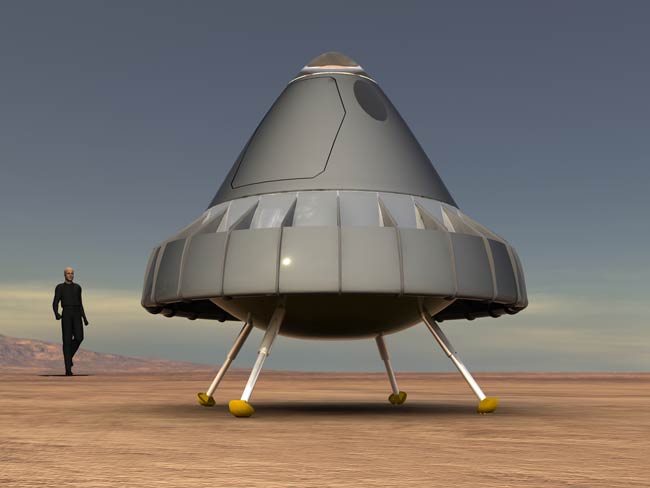Laser-Propelled Spaceships Could Transform Transportation

Beamed Energy Propulsion (BEP) is far more than a dream or idea: It is a powerful enabling technology that will radically transform the future of air and space transportation. It is physics, not imagination.
BEP permits us to build and fly hyper-energetic vehicles driven by remote sources of laser, microwave, and mm-wave power. Such vehicles provide unique performance that would be impossible to achieve with traditional, combustion-based engines. Vehicles driven by BEP will be "greener," safer, smaller, lighter, faster, and far more efficient than any currently existing means of flight transport.
Beamed Energy Propulsion, detailed in our book "The Lightcraft Flight Handbook: LTI-20," is inherently a clean technology. It uses electricity, which can be produced in an eco-friendly manner. It doesn't matter whether the electricity comes from Earth-based or space-based solar, wind, fission, fusion, hydroelectric (or other), so we can choose how to produce it — and we can choose from the start to produce it in an ecologically responsible way. We see here the emergence of nothing less than a sustainable energy infrastructure, one that permits us to relegate our crude oil to use as a chemical feedstock, a resource far too precious to burn.
Throughout the history of human transportation, two things have acted as the practical constraints on how fast, far, and high we can go: the power density of our engines and the energy density of our fuels. And what if we leave the "fuel" behind altogether — and exploit beamed energy propulsion instead? What if we could have the total output of an aircraft's or spaceship's powerplant devoted to lifting the payload and structural shell that supports the engines and payload?
Such a system would represent the next major breakthrough in aerospace propulsion, first enabling affordable access to space for launching constellations of nanosatellites, and finally transform humans from Earthlings into space-farers. We could not only lift 100 times as much payload with a given amount of energy — we could do so with cheap electric energy. By leaving the fuel behind, we also can make spaceflight much safer.
Cheap access to space is nothing short of revolutionary. Just as internal combustion, electricity, telephones, computers, the internet, and aviation have dramatically changed our lives, so will our lives be changed again by our gaining cheap access to nearby space. We will tap the vast energy resources of the sun and material resources of the nearby asteroids while expanding human civilization into this unbounded new environment. We will enter a new era for humanity, a new Age of Sustainable Flight Mobility.
Is beamed energy propulsion some futuristic pipe dream?? Interestingly, laser-powered lightcraft have already flown in miniature form. In a series of experiments nearly a decade ago, saucer-sized lightcraft were successfully launched using a military laser (one non-optimized for propulsion) at White Sands Missile Range, New Mexico to 71 meters altitude. That altitude record still stands. In one generation, the science and technology needed to build and fly full-size Lightcraft has been developed to maturity, ripe for commercialization. All that's needed now is to actually build them. The problem has evolved from a scientific one to an engineering one — simply a matter of will.
Breaking space news, the latest updates on rocket launches, skywatching events and more!
The sky is no longer the limit.
Leik N. Myrabo and John S. Lewis are the authors of "The Lightcraft Flight Handbook: LTI-20." This account of their book, available here, was written for SPACE.com.
